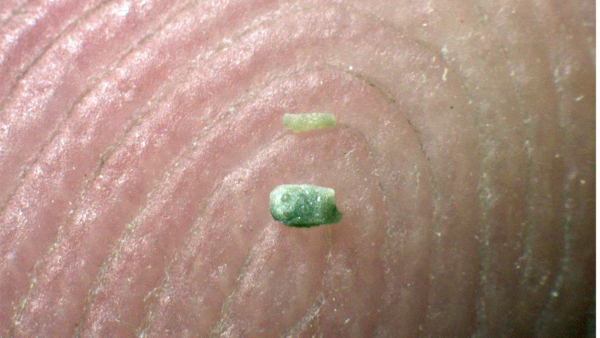 Credit: MNHN Luxembourg
Credit: MNHN Luxembourg
Palaeontologists from the National Museum of Natural History (MNHN) and peers have documented evolutionary speciation leading to current day brittle star (Ophiuroids) genus, related to the starfish, from fossils retrieved from rocks on the Swedish island of Gotland.
The research findings were published in the Communications Biology journal on Monday 10 January 2022.
The Gotland island was formed in a shallow tropical sea during the Silurian Period, which lasted sometime between 444 and 419 million years ago.
The researchers discovered 428 million-year-old microfossils that could precisely pinpoint the origin of the brittle stars to a single pair of temporally consecutive species (fossil specimen shown above).
“That these fossil were previously overlooked in spite of their obvious scientific interest is easily understandable when you look at their size”, said Dr Ben Thuy, palaeontologist at MNHN and lead author of the study. He continued: “They represent single components of the original brittle star skeleton and are less than half a millimetre in size”.
Because the fossils belong to previously unknown species, the authors had the privilege of naming them and they opted for an unusual reference.
“Music played a vital role during the long hours of sampling, analysing and writing, and so we decided to honour members of the bands that inspired us most during this study: hard rock giants Deep Purple and Swedish metal band Meshuggah”, explained co-author Prof Mats E. Eriksson from Lund University, who has devoted much of his research to Silurian fossils from Gotland. “The most exciting aspect of the new fossils, however, is that they not only show when the modern brittle stars originated but also how and even why”, he continued.
The team named the pair of evolutionary species Ophiopetagno paicei and Muldaster haakei.
Dr Davey Wright, a palaeobiologist at the National Museum of Natural History (Smithsonian Institution), added that “given the incompleteness of the fossil record, it’s very rare to precisely document the evolutionary transitions between species that led to the origin of a major group of animals, such as brittle stars. These fossils provide a remarkable exception”.
The transition between the two new brittle-star species documents a process of miniaturisation.
“This reduction in size from one species to the other forced a structural simplification of the skeleton, resulting in the body shape that characterizes all modern brittle stars”, said Dr Lea Numberger-Thuy from MNHN, co-author of the study.
The transition between the species coincides with a major environmental crisis, suggesting that the reduced body size is a response to unfavourable living conditions. “Born in distress is probably the most accurate summary for the origin of the modern brittle stars”, concluded Dr Thuy.








